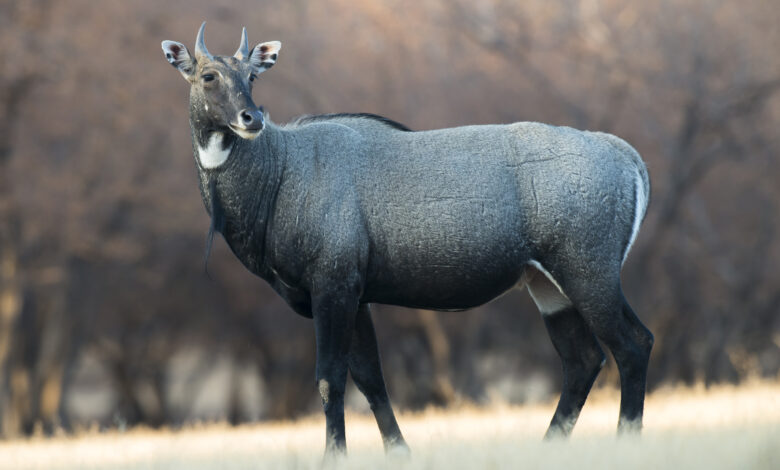
Nilgai (Boselaphus tragocamelus) (male - known as 'blue bull') in meadow, Ranthambhore National Park, Rajasthan, India. Photo Credit: James Warwick/Getty Images
Animals Bangladesh100 Years Later, Hope Returns for Asia’s Largest Antelope
Declared extinct in Bangladesh almost a century ago, the nilgai could return to the Asian country in undisturbed natural landscape as long as a public education campaign is carried out to discourage the population from hunting the animal.
“Nilgais could be reintroduced here in in-situ condition, but the antelope must be protected, ensuring its habitat, food, and water,” explains Ishtiaq Uddin Ahmad, former chief conservator of forests and Bangladesh’s former country representative to the International Union for Conservation of Nature (IUCN).
Also known as the blue bull (male animals), the nilgai went locally extinct due to the loss of natural habitats and unchecked hunting practices. However, the nilgai isn’t considered threatened on the IUCN Red List since it has abundant populations in India, Nepal, and Pakistan; the Boselaphus tragocamelus was also successfully introduced in the United States and Mexico. Still, in Bangladesh, the nilgai was declared extinct in the 1930s. A protected area could be established in the northwestern districts of Bangladesh, near the border with India, where there are still large swaths of undisturbed landscape. Coupled with management measures and a proper educational campaign, the Forest Department only has a rudimentary program to discourage the killing of nilgai, and the species could thrive once more in Bangladesh.



